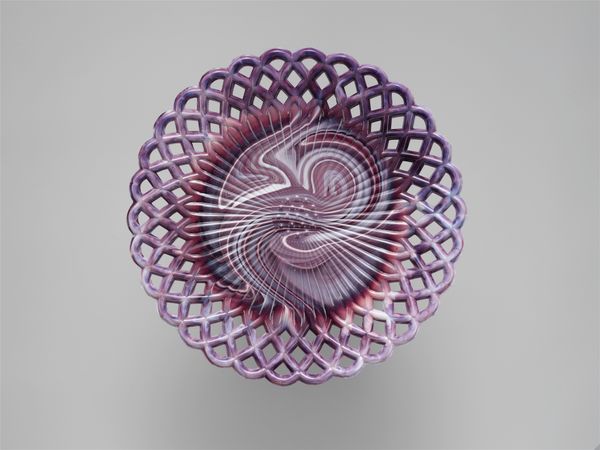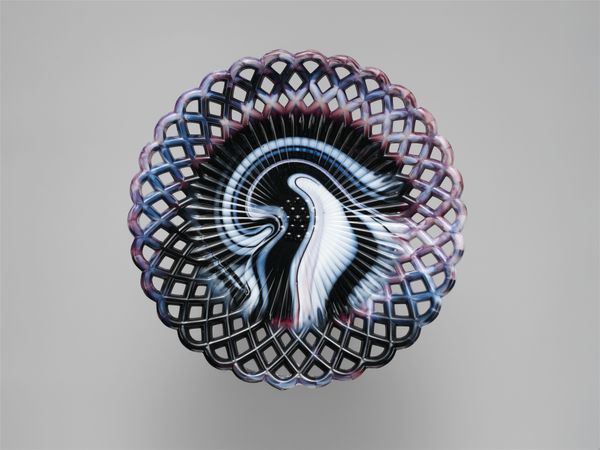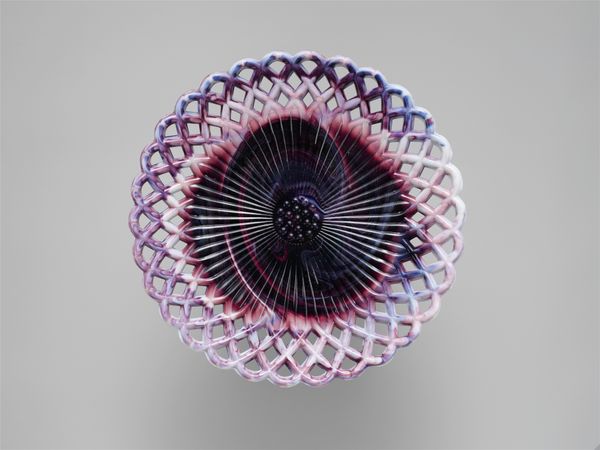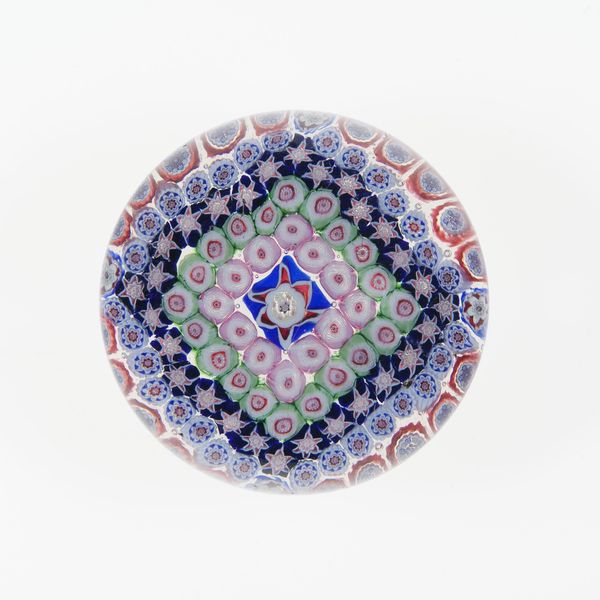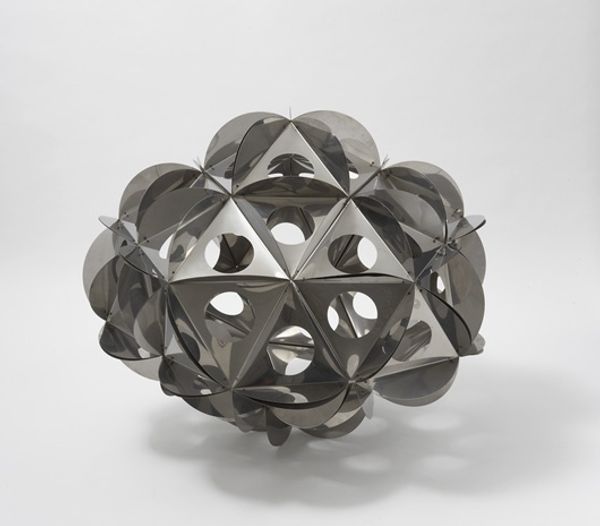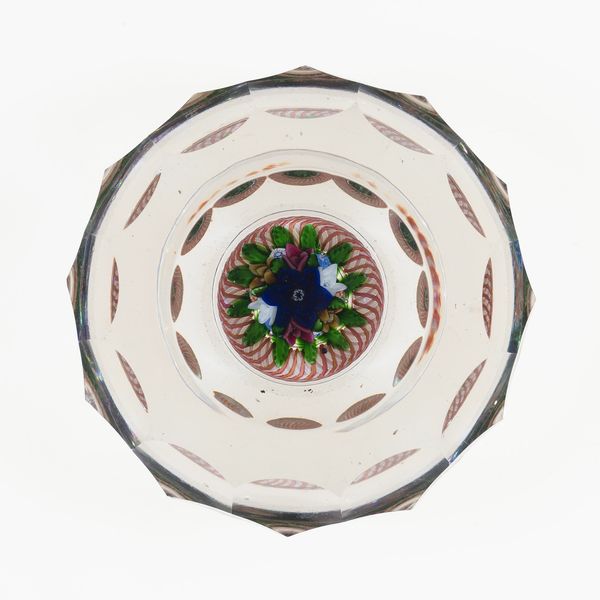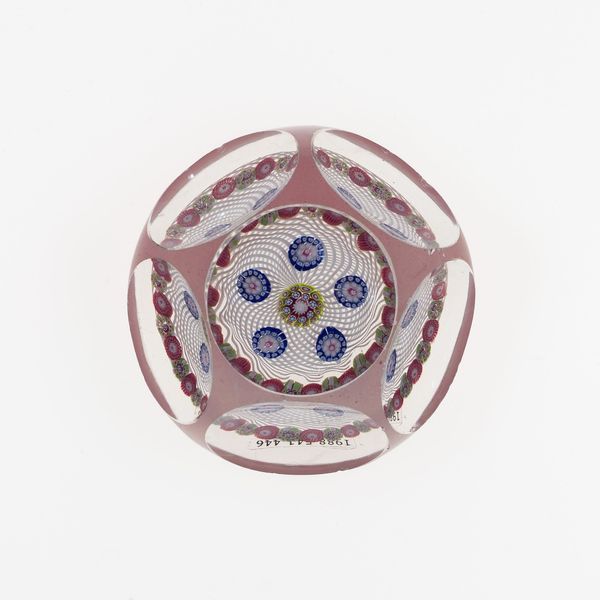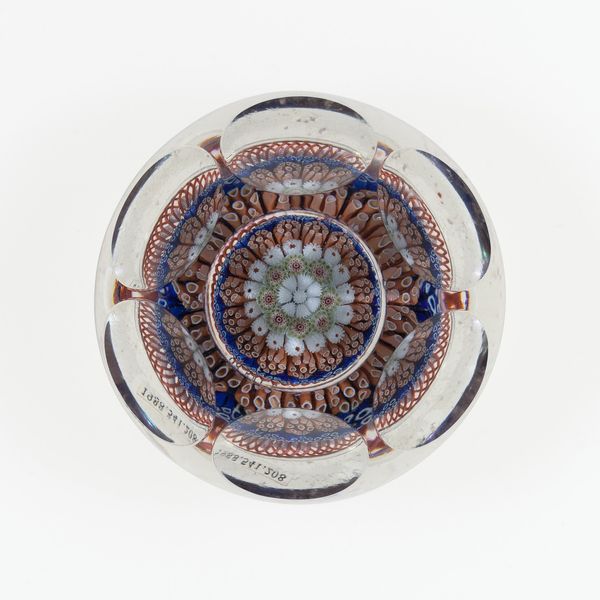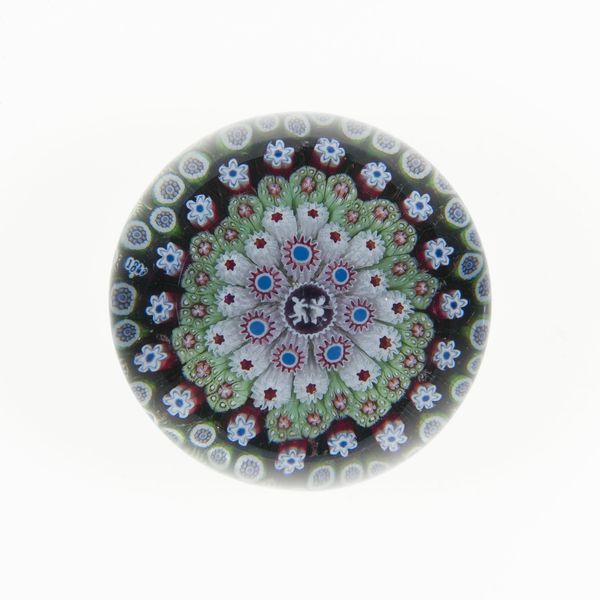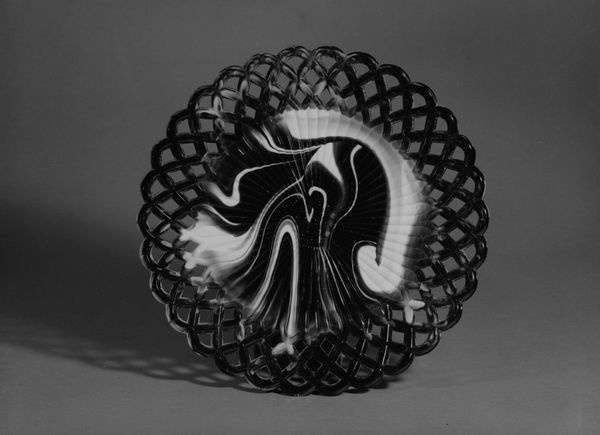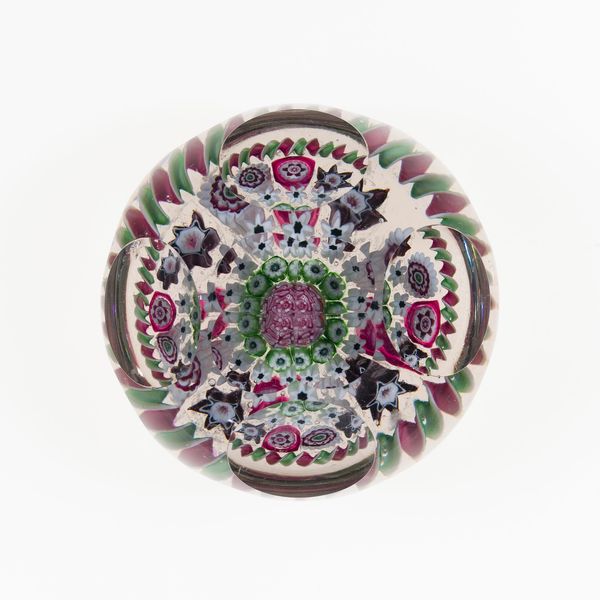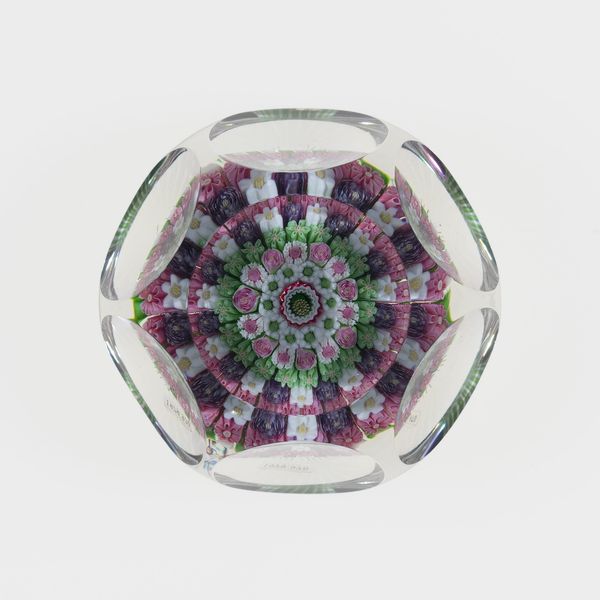
glass
#
glass
#
decorative-art
Dimensions: Diam. 10 3/8 in. (26.4 cm)
Copyright: Public Domain
Curator: This is an example of decorative art. It's a ceramic plate, produced sometime between 1870 and 1890 by Challinor, Taylor and Company here in the United States. Editor: Immediately, I'm struck by its intricacy. The swirling patterns at the center give it a mesmerizing, almost psychedelic feel, contrasted against the rigid grid work. Curator: Yes, the piece seems to embody the Pattern and Decoration movement in its intense focus on surface ornamentation. What do you make of the cultural context? Editor: Well, thinking about the era, I wonder about the consumer culture this plate existed within. Mass production was on the rise, bringing decorative objects to a wider public, but often at the expense of artistry and the exploitation of laborers. What kind of social inequalities are embedded in this object's history? Curator: Precisely. Examining its origins brings up fascinating points. Mass production did fuel access to more affordable art but understanding the historical backdrop of this production and what sort of social impact did these objects left for us today? Editor: Absolutely! Also the swirling pattern at its center… it almost pulls the eye inward, creating a dizzying vortex. There's something quite seductive, but also slightly unsettling, about its visual dynamism. And what about its function? Was it merely decorative, or was it meant for use? Who was its intended audience? Curator: Great question. While meant for usage this decorative object could also express power or status to its intended audience. Furthermore the fact that this object is still around means it passed through different households making an imprint in various stages of time. Editor: And isn't that the crux of it all? These objects carry stories within them—histories of labor, consumption, and social status that can help us decode larger power dynamics. It asks us to question, and deconstruct. Curator: I agree, seeing decorative arts of the time lets us explore all possible narrative around mass production. Editor: It enriches our present understanding and creates more space for future possibilities!
Comments
No comments
Be the first to comment and join the conversation on the ultimate creative platform.

